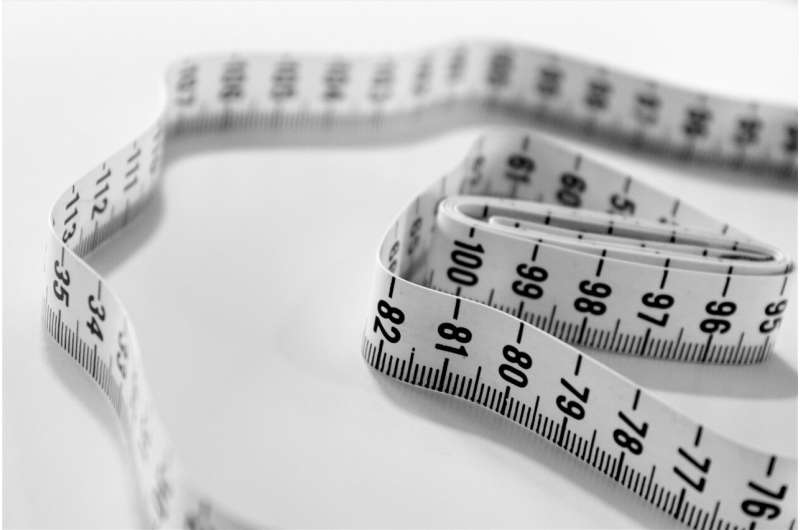Why you might not be the body shape you think

Hourglass, bottom hourglass, top hourglass, spoon, rectangle, diamond, oval, triangle, and inverted triangle… there are nine official female body shape classifications.
However, new research shows that just moving the tape measure by 1cm could shift 40% of women into a different shape class, giving conflicting results.
Depending on how somebody is measured, a spoon shape—which is like a pear—can also be judged to be a bottom hourglass shape.
Similarly, a triangle can be reinterpreted as a rectangle.
Dr. Christopher J. Parker, of Loughborough University, the research's lead author, said: "Until now, science did not know the impact different ways of taking a body measurement has on the shape classification a woman ends up with—for example, spoon, triangle, or bottom hourglass.
"Style and health experts often use women's body shape as the basis of style choices.
"If a woman wants to replicate this advice—for choosing the 'right' style or taking the right supplements, the classification must be stable. Our research investigates this problem.
"We need to understand if a woman's body can be classified into more than one body shape just by taking a slightly different measurement—for example, moving the tape measure up by 1cm when taking a waist measurement."
The study—in collaboration with the University of Manchester and Manchester Metropolitan University—measured 1,679 women using three widely used measurement placement directions.
The researchers found small changes in measurement placement put 40% of women into different, non-compatible, body shapes when looking to objectively classify body shape.
"A stylist might give stunning suggestions for a 'spoon' body," said Dr. Parker. "But if a woman measures herself using slightly different parts of her body, then she may follow the 'bottom hourglass' style by mistake.
"Discovering how precise experts must be when telling people how to measure and classify their body may help style guides be easier to replicate at home."
As well as having implications for fashion and style, the research also means that scientists, designers (other than clothing) and international health groups must question whether the body shape classification systems they use are fit for purpose.
Dr. Parker added: "Maybe everything we know about body shape is flawed."
More information: Christopher J. Parker et al. Assessing the female figure identification technique's reliability as a body shape classification system, Ergonomics (2021). DOI: 10.1080/00140139.2021.1902572



















